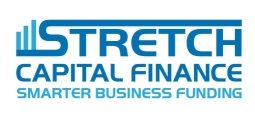Secured and Unsecured Funding Available Now
Getting Funded Has Never Been Easier!
Our experienced team is ready and waiting to help you with all your funding requirements.
Small business loans Melbourne
What is an unsecured loan ?
An unsecured loan is one that is approved purely based on the borrower’s creditworthiness, with no collateral pledged as security in the case of default or non-payment of dues. Unsecured loans, sometimes known as personal loans, are typically made available to individuals with excellent credit. Call our expert staff today for your small business loans Melbourne.
What is a secured loan and how does it work?
A secured loan is one that has the backing of some sort of collateral, financial assets you possess, such as a home or a car—that may be used to repay the lender if you fail to repay the loan. To apply successfully for a secured loan, a simple concept must be appreciated. Collateral is provided to the lender in exchange for a secured loan in order to motivate borrowers to repay the loan on time.
What is a Cash Flow loan ?
A cashflow loan is a term loan that does not require any business or personal assets as collateral. Instead, bankers normally make loans based mostly on historical and projected cash flow. Cash flow loans are often amortised for a very short period of time, ranging from four to eight years.
What is Bridging Finance ?
A bridging loan is a short-term finance strategy designed to help homeowners “bridge” the gap between selling their existing property and the purchase of their new home. While you wait for your current home to sell, you can utilise the equity in your present home to finance the down payment on your next home.
Bridging loans are unquestionably a short-term solution intended to enable the completion of another project. If you’re looking to earn a profit, bridging can be a smart alternative, but keep in mind that the cost of funding should be factored into your profit numbers.
Notably, bridging loans are much different to your everyday small business loans Melbourne.
What are the risks of a bridge loan ?
High interest rates: Because lenders have less opportunity to earn a profit on a bridge loan due to its shorter period, they tend to demand higher interest rates for this sort of short-term financing than they do for traditional loans.
Lenders frequently charge origination costs to “originate” a loan.
How much does a bridging loan cost?
Bridging loans are charged monthly rather than annually since they are often taken out for a short period of time. One of the biggest disadvantages of a bridging loan is that they are fairly expensive: you might pay monthly costs ranging from 0.5 percent to 1.5 percent.
What are the alternatives to bridging finance?
Both asset refinancing and invoice finance may be implemented rapidly and are a less expensive option to bridging loan. Development financing, commercial loans, secured loans, commercial mortgages, and asset loans are among more options.
Why is it called mezzanine financing?
A mezzanine loan in real estate is a sort of finance that investors use to fund purchases or development projects. Within the capital stack, mezzanine loans are subordinate to senior debt but have priority over both prefered and common stock.
It is referred to as “mezzanine” because its risk level is halfway between secured loans supplied by Tier 1 lenders such as banks and capital provided by equity investors who acquire a stake in the asset. Those that provide mezzanine funding may be entitled to receive some type of payment.
For all your business funding needs – Small business loans Melbourne – Call Today!
What is a construction loan ?
Home building loans are typically one-year contracts…. Interest is levied against the entire loan amount. Construction loans might help you get the money you need up front to buy the property you want to build on. Land acquisitions are often not serviced by mortgages.
What is a low doc loan ?
A loan with less financial documents required to verify income, assets, and obligations than a regular loan. They are typically utilised by self-employed individuals and small company owners, and they are typically issued at higher interest rates and may include stipulations that limit borrowers.
For low doc home loans, most lenders will want at least a 20% down payment. You’ll need documents to prove your income, such as an accountant’s letter or a bank statement. The majority of lenders will also want an ABN that has been GST registered for two years, while some lenders are more liberal on this condition.
Call Stretch Capital today for any assistance you may require for small business loans Melbourne wide.
What is a no doc loan?
A no doc loan is simply a ‘no proof of income’ house loan alternative that does not need as many financial paperwork as a traditional home loan.
Should you be a contractor, self-employed, or a professional investor, it may be tough to furnish all of the financials required by the bank to evaluate your house loan.
That’s when a no doc (or no paperwork) home loan is the ideal alternative.
A no doc home loan is designed to assist self-employed borrowers who do not have access to regular PAYG payslips or other documentation to establish their income.
Most financial institutions do not operate in this area since such loans are more risky for lenders.
Call Stretch Capital today for any assistance you may require for small business loans Melbourne.
Industry News & New Funding Opportunities









